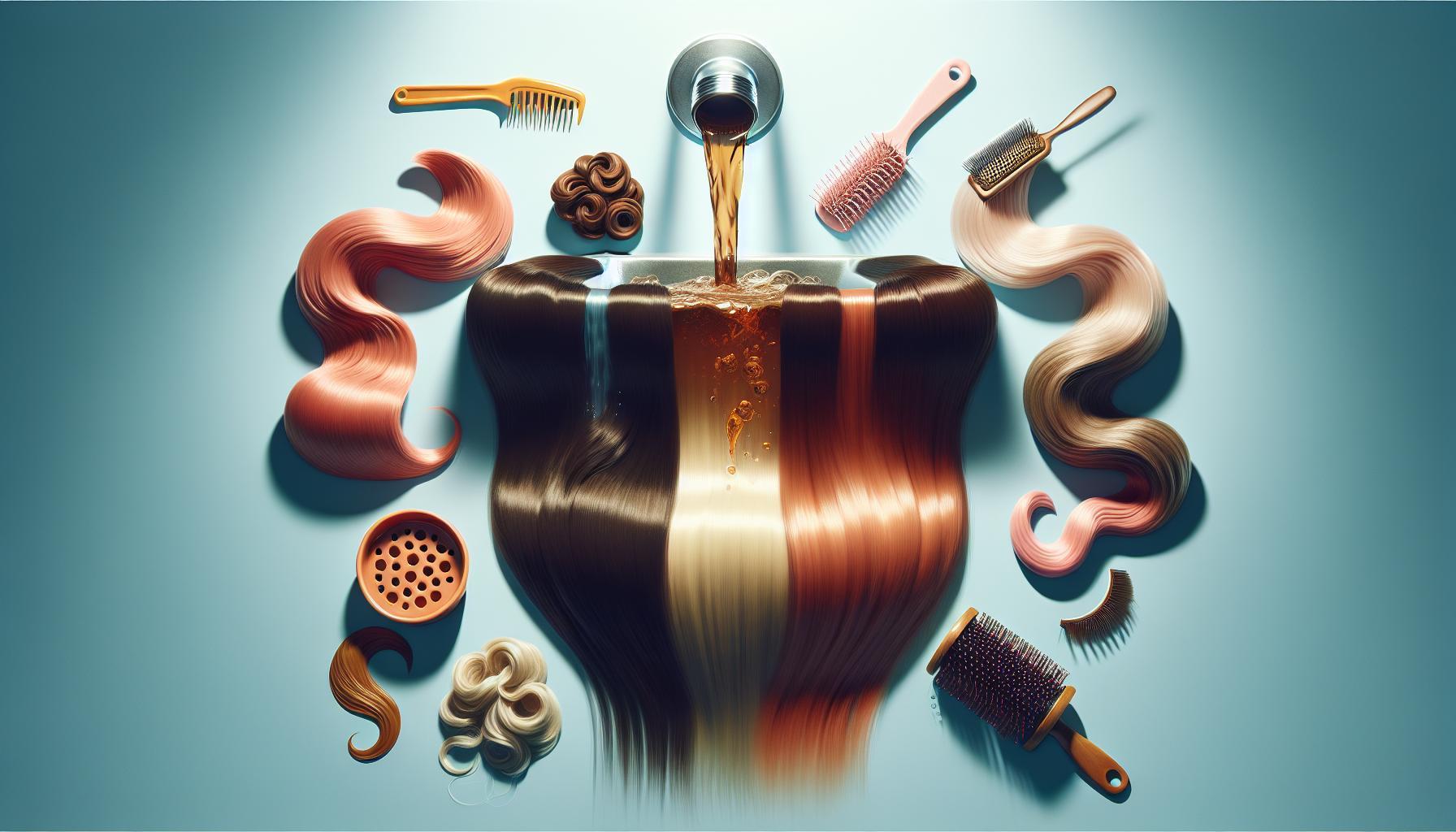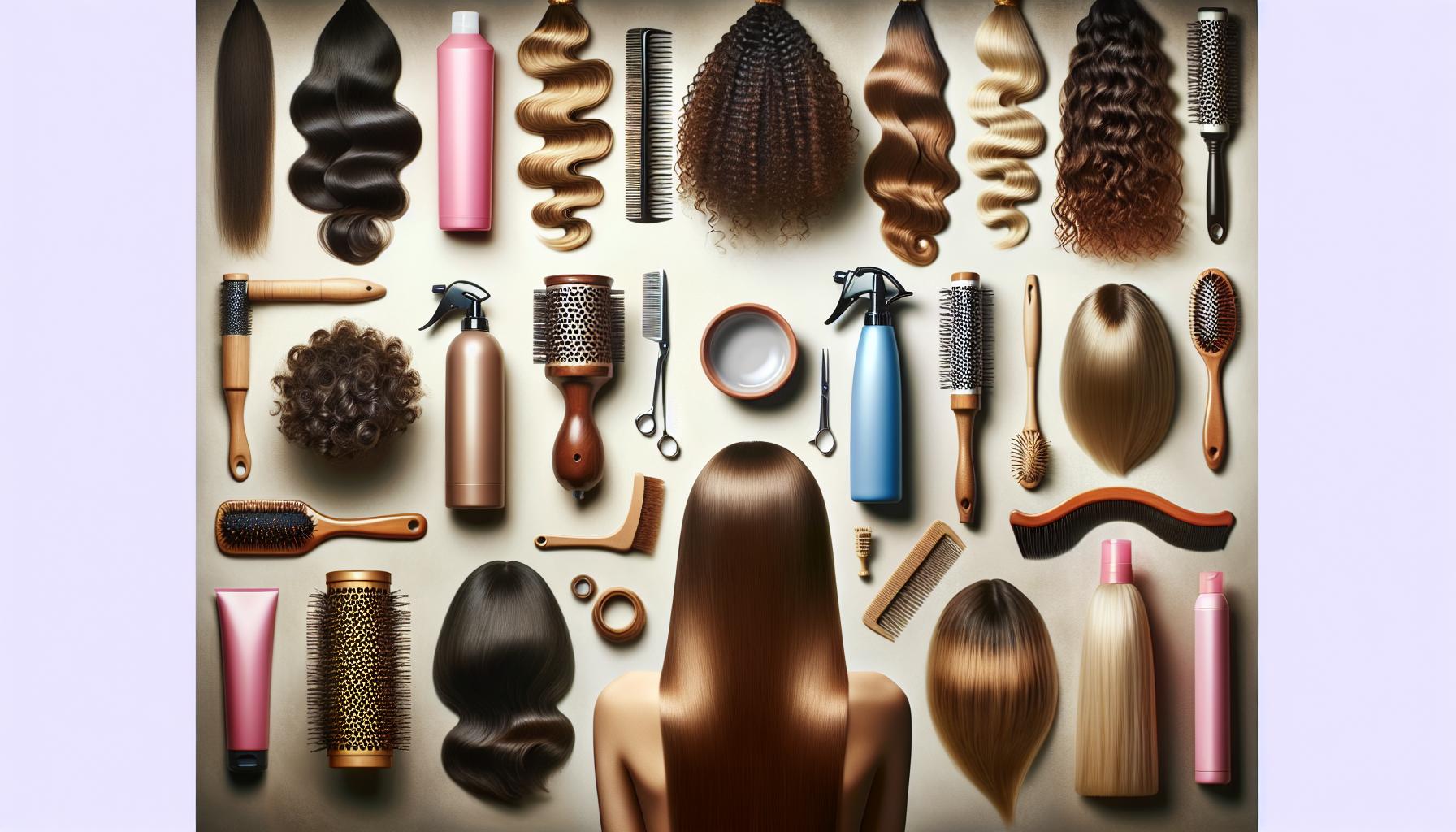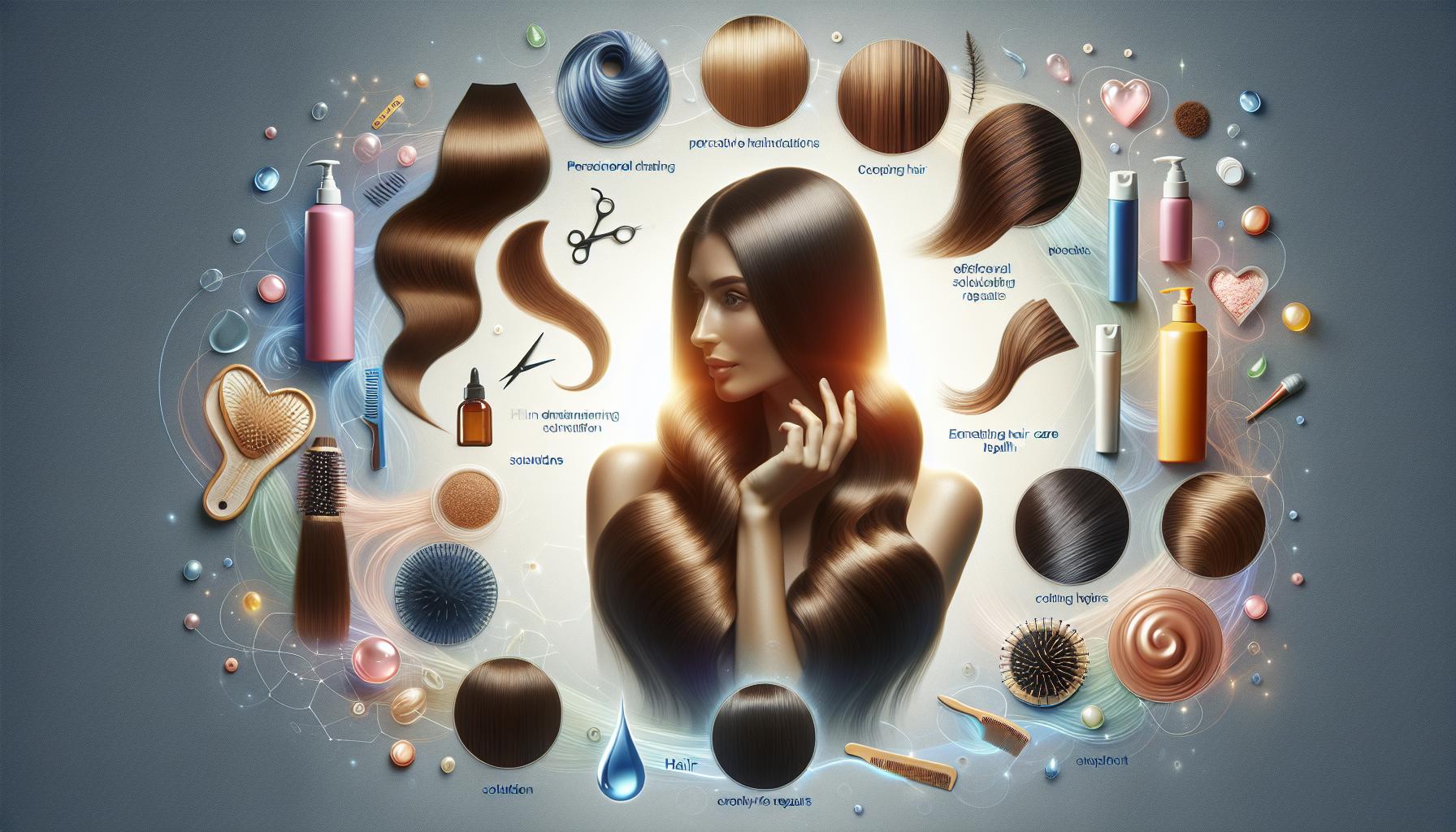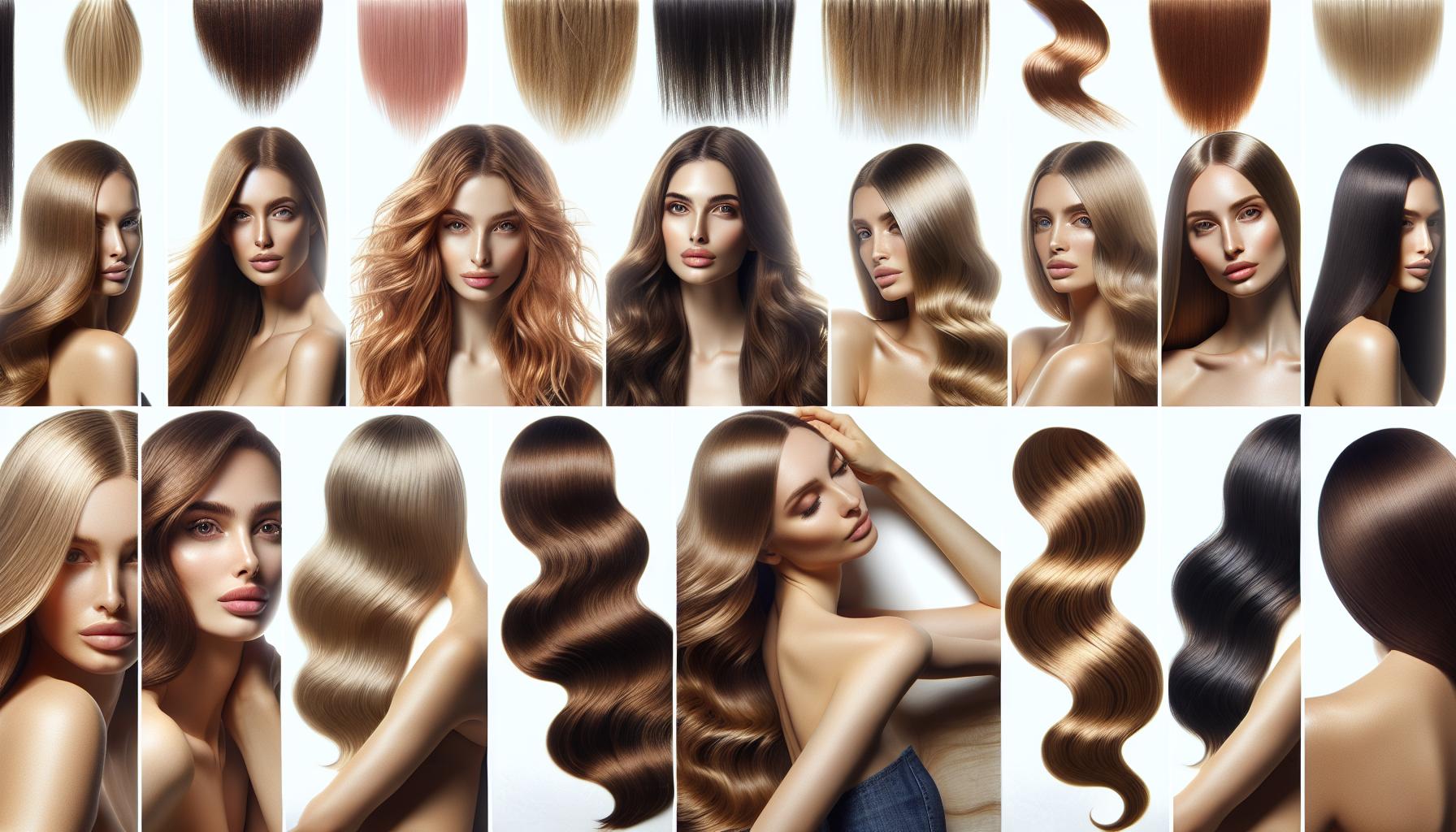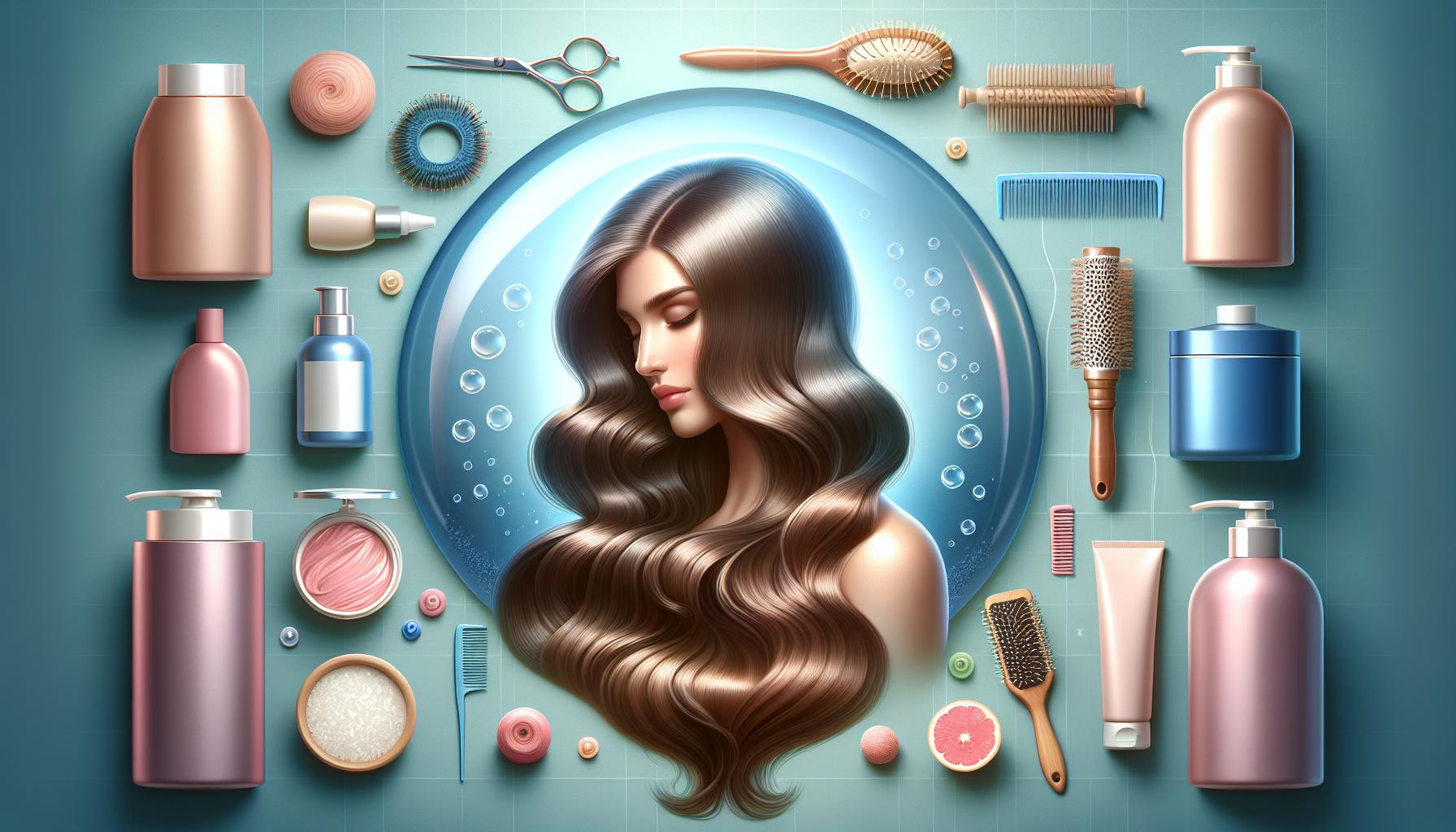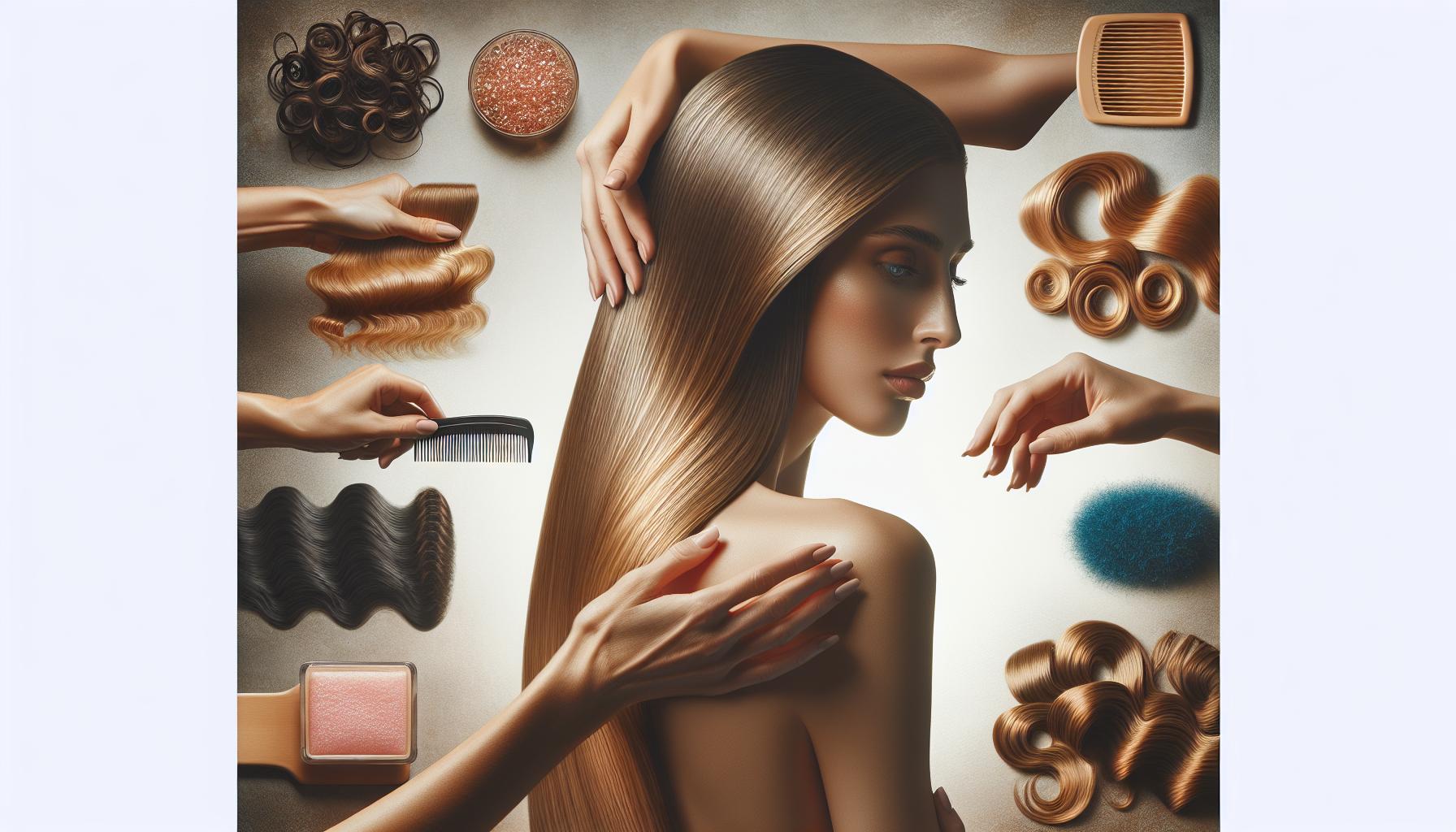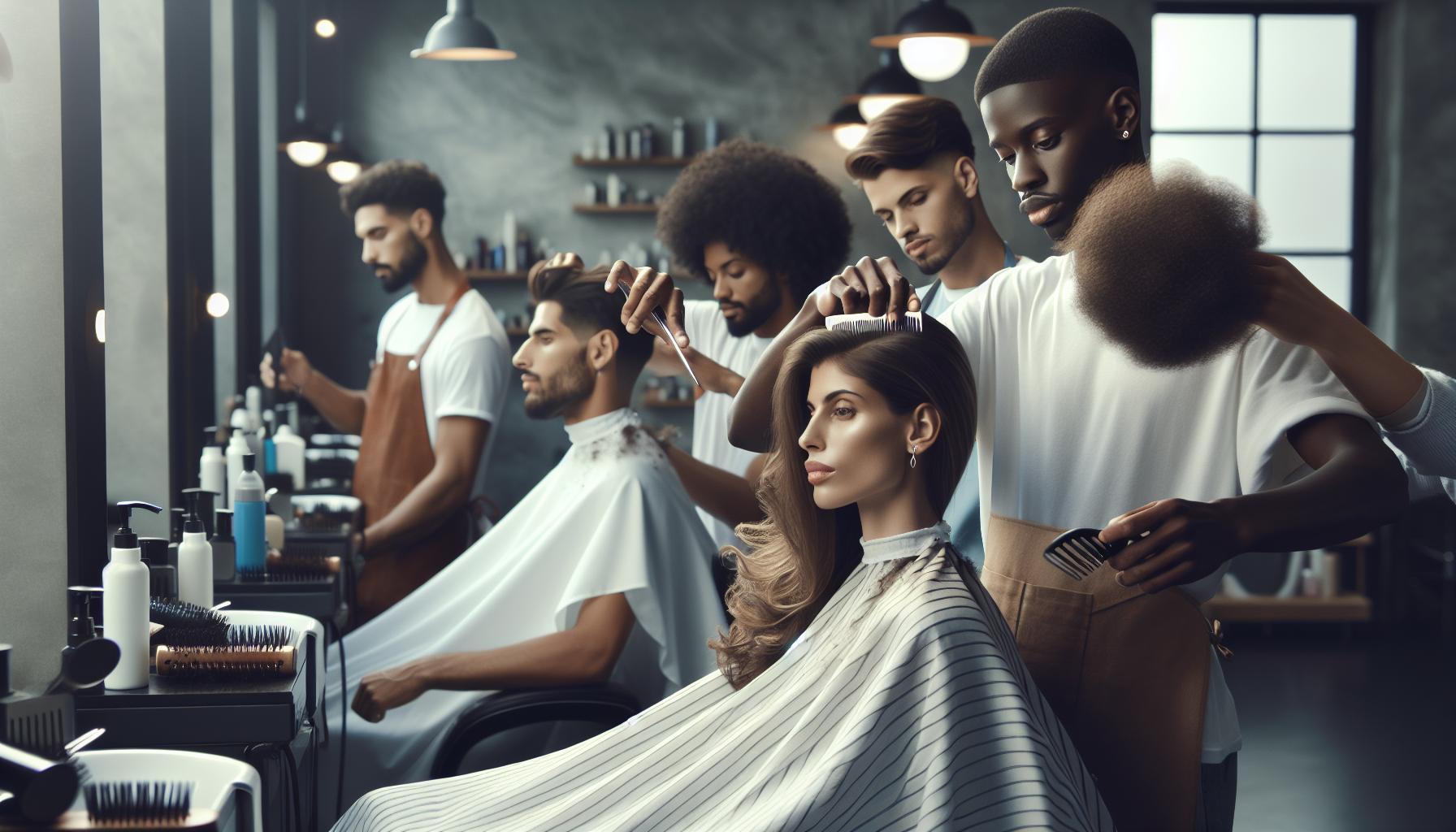Every time you brush your hair over the sink, do you wonder where those strands end up? Flushing hair down the drain might seem harmless, but it can lead to serious plumbing issues.Understanding the impact of hair on your plumbing system is crucial for maintaining a healthy drain and preventing costly repairs.
Contents
- Understanding the Impact of Hair on Your Plumbing System
- Why Flushing Hair Can Lead to Costly Repairs
- identifying the Right Disposal Methods for Hair
- The Science Behind Hair Buildup in drains
- How to Prevent Hair Clogs: Tips and tricks
- Exploring Eco-Friendly Alternatives to Hair Disposal
- What to Do If Your Drain is Already Clogged with Hair
- Expert Insights: When to Call a Professional Plumber
- Q&A
- Is it Bad to Flush Hair Down the Drain?
- is it bad to flush hair down the drain?
- What happens when you flush hair down the drain?
- Can I flush small amounts of hair down the drain?
- Why does hair cause plumbing issues?
- What can I do to prevent hair clogs?
- Are there long-term effects of flushing hair down the drain?
- What should I do if I have a clog from hair?
- Final Thoughts
Understanding the Impact of Hair on Your Plumbing System
Hair is frequently enough an unseen culprit lurking in the depths of plumbing systems, quietly wreaking havoc without homeowners even realizing it. When flushed down the drain, hair can accumulate and form clogs that lead to important plumbing issues. Understanding how hair interacts with your plumbing can save you from costly repairs and frustrating backups.
The nature of Hair and Its Behavior in Pipes
When you flush hair down the drain, it tends to wrap around existing debris within the pipes, such as soap residue, grease, and food particles. This propensity to tangle makes hair especially risky for plumbing systems because it can escalate minor clogs into significant blockages. A study of household plumbing demonstrated that hair contributes to about 75% of blockages in residential drainage systems, showcasing just how problematic this seemingly innocent material can be.
- Hair’s Structure: Unlike other debris, hair is fibrous and flexible, making it capable of binding with various types of waste.
- Water flow: Hair disrupts normal water flow, leading to slow drains and potential overflow.
- Size Matters: Even small amounts of hair can amplify clogs over time as they accumulate.
Real-World Consequences of Hair Clogs
Ignoring the question of weather it’s bad to flush hair down the drain can lead to several real-world consequences. Many homeowners might not realize that a single strand of hair does not seem like much, but cumulatively, this can lead to:
| Issue | Potential Cost |
|---|---|
| Minor Clogs | $100 – $250 (cleaning and minor repairs) |
| Severe Blockages | $250 – $500 (professional plumbing services) |
| Pipe Replacement | $1,000 – $3,000 (extensive damage) |
These costs can quickly add up, making it essential for homeowners to take proactive steps to manage hair before it becomes a plumbing nightmare. Regular maintenance, such as using drain covers, can catch hair before it enters the piping system, mitigating the risks associated with flushing hair and other materials down the drain.
Incorporating these practical measures and realizing the impact of hair on your plumbing can make a significant difference for any household. By being conscientious about what goes down the drain, you not only preserve the integrity of your plumbing system but also save yourself from potential financial strain in the future.
Why Flushing Hair Can Lead to Costly Repairs
Flushing hair down the drain may seem like a minor inconvenience, but it can spiral into a serious headache for your plumbing system and your wallet. Most people underestimate the impact that even a small amount of hair can have when it accumulates over time. When hair mixes with soap, grease, and other debris, it forms stubborn clogs that can wreak havoc on your plumbing infrastructure.
Understanding the Clogging Process
Hair has a unique tendency to tangle and bind with other materials, creating a dense mass that can easily choke your pipes. This accumulation can lead to multiple types of plumbing problems, including:
- Complete Blockages: A significant mass of hair can entirely obstruct the flow of water, leading to draining issues and backups.
- Slow Drains: Even a small amount of hair can slow down drainage over time, making it increasingly inconvenient.
- Pipe Damage: As pressure builds up due to clogs, it can weaken your pipes, possibly leading to leaks and cracks.
Neglecting to address hair buildup can result in costly plumbing repairs. for example, removing a serious clog often requires professional assistance, which can run into hundreds of dollars.
Real-World Costs of Pipe Repairs
When considering the implications of flushing hair, its essential to be aware of the potential financial burden. The following table illustrates common plumbing repair costs associated with hair clogs:
| Type of Repair | Estimated Cost |
|---|---|
| Simple Drain Cleaning | $100 – $300 |
| Pipe Inspection | $200 – $500 |
| Partial Pipe Replacement | $1,000 – $2,500 |
| Full Sewer Line Replacement | $3,000 – $7,000 |
With these figures in mind, it becomes clear that the cost of routine maintenance and prevention far outweighs the expense of repairing the damages caused by simple, careless actions like flushing hair. To protect your plumbing system and avoid these substantial costs, it’s best to dispose of hair properly in the trash rather than down the drain.
identifying the Right Disposal Methods for Hair
In the world of household maintenance, many people underestimate the cumulative impact of seemingly small actions, like flushing hair down the drain. While it may seem innocuous at first, this habit can lead to significant plumbing issues over time. Hair, unlike toilet paper, does not break down easily and can form stubborn clogs that disrupt your plumbing system. Understanding the appropriate disposal methods for hair not only helps maintain the functionality of your drainage system but can also contribute positively to environmental efforts as well.
Why Proper Disposal Matters
Disposing of hair properly is crucial for several reasons:
- Preventing Clogs: Hair combines with soap residues and other debris to create blockages, which can lead to expensive plumbing repairs.
- Environmental Impact: Flushing non-biodegradable materials can harm local water systems, as they can contribute to pollution.
- Cost Efficiency: Regularly maintaining your plumbing can save you money on repairs and increase the lifespan of your plumbing system.
effective Hair Disposal Methods
Knowing how to dispose of hair can substantially reduce the chances of plumbing mishaps. Here are some recommended methods for dealing with hair waste:
- Trash It: Collect hair strands in a small bag or container and dispose of them with your regular trash.
- Compost: If you have a compost pile, consider adding hair, as it can provide nitrogen and support soil health (ensure no treatments or chemicals are present).
- DIY hair Catchers: Use a mesh drain cover or strainer to catch hair before it enters the drain, allowing for easy disposal.
Choice Solutions and Tools
You can also invest in tools designed specifically for managing hair disposal:
| Product | Function | Benefits |
|---|---|---|
| Drain Hair Catcher | Placed over drains to trap hair | Easy to clean, protects plumbing |
| handheld Vacuum | Efficiently vacuums up hair from surfaces | Prevents hair accumulation |
| biodegradable Hair disposal Bags | Holds hair for disposal | Eco-friendly option for waste management |
By adopting these strategies and being mindful of your hair disposal practices, you can significantly reduce the risk of plumbing complications. Remember, taking proactive steps is essential when it comes to maintaining a healthy home surroundings and plumbing system.
The Science Behind Hair Buildup in drains
Hair is one of the most common culprits in plumbing issues,especially when it comes to drain blockages. You might think that flushing hair down the drain is harmless, but the reality is that it can lead to significant plumbing problems over time.Understanding the science behind how hair buildup occurs in your drainage system sheds light on why it’s essential to be cautious about what you rinse away.
When hair is washed down the drain, it doesn’t simply wash away. In fact, hair strands often tangle and clump together due to their fine and flexible nature. As water flows through the pipes, hair can latch onto other materials, forming a sticky mass. Over time, this accumulation can severely restrict water flow unless it’s addressed promptly. The process can be likened to how lint gathers in a dryer vent, but in drains, the stakes are higher as it can lead to unpleasant backups and costly plumbing repairs.
The Process of Hair Buildup
Here’s how the buildup typically occurs in your plumbing system:
- Initial Entry: When hair is washed down, it enters the drain along with soapy water and other residues.
- Tangle Formation: Once in the pipes, hair strands can twist and latch onto rough surfaces or other debris.
- Clumping: over time, these tangles can incorporate soap scum, oils, and other materials, forming dense clumps.
- Blockage: As blocks form, they can restrict water flow leading to slow drainage or even complete clogs.
Factors Contributing to Hair clogs
Several factors contribute to how quickly hair can lead to a blockage:
| Factor | Impact on Drainage |
|---|---|
| Pipe Size | Smaller pipes can clog more easily and quickly due to limited space. |
| Water Flow | Low water pressure can worsen blockage as water struggles to push hair along. |
| Frequency of Use | More frequent use (e.g.,in a family home) can accumulate hair more rapidly. |
| Hair Type | Longer or thicker hair tends to tangle more readily, increasing the risk of blockages. |
By recognizing these factors, homeowners can take proactive steps to prevent hair buildup.Regularly using a drain strainer or trap can capture hair before it enters the plumbing system, significantly lowering the risk of clogs.Regular maintenance—like using baking soda and vinegar for cleaning out minor build-ups—can also keep the pipes clear and operating efficiently. The question, “Is it bad to flush hair down the drain?” clearly points to the need for preventative measures to protect your plumbing system from the dangers of hair accumulation.
How to Prevent Hair Clogs: Tips and tricks
Hair clogs can be a troublesome issue for homeowners, leading to slow drainage and costly plumbing repairs. Surprisingly, hair is one of the leading contributors to clogs, particularly in showers and sinks, where loose strands accumulate over time. Thankfully, there are several effective strategies to prevent hair from finding its way into your drainage system.
Regular Maintenance and Cleaning
one of the simplest ways to combat hair clogs is by incorporating regular cleaning into your routine. Here are a few practical tips:
- Use Drain Covers: Installing a drain cover or hair catcher can effectively trap hair before it enters your plumbing system.
- Routine Cleaning: Make it a habit to remove hair from your shower drain after every use and check sink drains weekly. This proactive approach can significantly reduce buildup.
- Clear Out the P-Trap: Every few months,disconnect and clean the P-trap underneath your sink,as it can collect hair and other debris.This is a simple DIY task that can save you from bigger problems down the road.
Creative Solutions for Hair Management
There are also some innovative strategies to manage hair loss and minimize its impact on your plumbing. Consider these options:
- Brush Outdoors: Try to brush your hair outside or over a trash can to catch loose strands before they enter your home. Another option is using a lint roller to capture hair around your living space.
- Switch to Shorter Styles: If long hair is a persistent problem, think about opting for a shorter hairstyle or tying your hair back when washing to limit fallen strands.
- Limit Shower Time: Reducing the time spent in the shower not only conserves water but also decreases the amount of hair that can wash down the drain.
Understanding Plumbing Best Practices
Being informed about plumbing best practices can also empower you to take better care of your home. Consider these facts and tips:
| Fact | Tip |
|---|---|
| Hair can take months to form clogs,depending on other debris. | Schedule routine drain inspections to catch early signs of blockage. |
| Hot water can cause hair products to congeal, leading to more clogs. | Use cold water to rinse your hair products away when possible. |
| Flushing hair can lead to major plumbing repairs. | Encourage family members to be mindful and avoid flushing hair. |
By adopting these simple yet effective measures, you can safeguard your plumbing from the detrimental effects associated with flushing hair down the drain. Being proactive in maintaining your drains not only ensures the health of your plumbing but also saves you from unneeded stress and expense in the future.
Exploring Eco-Friendly Alternatives to Hair Disposal
Hair is a natural byproduct of grooming, but when it comes to disposal, many people are unaware of the potential plumbing implications. Flushing hair down the drain can lead to clogs and further issues in the sewage system. Rather of contributing to plumbing problems, there are eco-friendly alternatives that allow you to dispose of hair responsibly.By adopting these methods, not only can you help maintain good plumbing health, but you can also contribute positively to the environment.
Composting: A sustainable Solution
Composting is an excellent way to recycle organic waste, and hair qualifies as a valuable addition to your compost pile. Hair is primarily made up of protein (keratin), which can decompose and enrich the soil. To incorporate hair into your compost:
- Gather hair clippings from your brush, the salon, or your home grooming sessions.
- Mix hair with other compost materials such as kitchen scraps, dry leaves, and grass clippings to avoid excessive matting that can slow down decomposition.
- Monitor the balance of nitrogen-rich (green) and carbon-rich (brown) materials to create a healthy compost environment.
The result will be nutrient-dense compost that can benefit your garden,promoting healthy plant growth while ensuring that hair doesn’t clog pipes or contribute to landfill waste.
Crafting: Transforming Hair into Art
Beyond composting,hair can find a second life in different artistic endeavors. Hair is often used by artisans for crafting items such as jewelry,hair accessories,and more. Some creative ideas include:
- Hair Art: Artists create intricate designs or portraits using hair strands.
- Jewelry Making: Hair can be woven into bracelets or necklaces, offering a unique sentimental touch.
- Home Décor: Weaving hair into wall hangings or decorative pieces can serve as a conversation starter.
If you’re not inclined towards crafting,consider donating hair to organizations that can transform it into wigs for individuals dealing with hair loss due to medical conditions.
Hair Donation: A Generous Choice
If you’re trimming or cutting your hair, consider the option of donating it to charity. Many organizations gladly accept hair donations to create wigs for those experiencing hair loss through illness or other circumstances. Here’s a rapid guide to find suitable programs:
| Institution | requirements | Website |
|---|---|---|
| Locks of Love | Minimum 10 inches, clean and dry hair | locksoflove.org |
| Wigs for Kids | Minimum 12 inches, no chemical damage | wigsforkids.org |
| Hair We Share | Minimum 8 inches, any color or texture | hairweshare.org |
By pursuing these eco-friendly hair disposal methods, you can make a remarkable impact on both plumbing health and environmental sustainability. Remember, responsible disposal practices not only protect your home and community but also contribute to a greener planet for future generations.
What to Do If Your Drain is Already Clogged with Hair
Clogged drains are one of the most common plumbing issues homeowners face, and hair is frequently enough the main culprit. Whether it’s long strands or pet hair,once it starts to accumulate,it can create a stubborn blockage that affects your plumbing system. Understanding what to do when faced with this scenario can save you time and money.
Immediate Steps to take
If you notice that your drain is already clogged, acting quickly can help minimize further damage and restore proper function. Start with these practical steps:
- Stop Using Water: Halt any water flow to prevent further accumulation or backup.
- Use a Plunger: A common household tool, a plunger can dislodge minor clogs. Ensure there’s enough water in the sink or tub to cover the cup of the plunger, and pump vigorously for several seconds.
- Try a Drain Snake: For more stubborn hair clogs, a drain snake can be very effective. Insert it into the drain and twist it around to catch more hair.
- Remove the Drain Cover: If accessible, unscrew or pry off the drain cover to pull out hair manually with a pair of tweezers or gloves.
Chemical Solutions and Alternatives
If mechanical methods don’t work, you might consider using chemical solutions. However, proceed with caution; many products can be harsh on your plumbing system.
- Enzyme Cleaners: Opt for enzyme-based cleaners that are more environmentally friendly and target organic material, including hair.
- Baking Soda and Vinegar: A natural alternative is mixing baking soda with vinegar. Pour half a cup of baking soda followed by half a cup of vinegar down the drain, let it sit for about 30 minutes, and then flush with hot water.
When to Call a Professional
Sometimes, clogs are beyond what DIY methods can handle. If the problem persists despite your efforts, it may be time to contact a plumber. Persistent clogs could indicate a deeper issue in the plumbing or sewer lines that requires professional intervention.
| signs You Might Need a Plumber | Clarification |
|---|---|
| Recurring Clogs | if hair continues to clog your drain despite frequent cleaning, there may be a larger issue at play. |
| Multiple Drains Clogged | Clogs affecting more than one drain could indicate a blockage in the main sewer line. |
| Unpleasant Odors | Foul smells may indicate stagnation and require professional assessment. |
Taking proactive measures to prevent hair clogs is a crucial part of home maintenance. Yet, when the damage is done, knowing how to respond can restore your peace of mind and your plumbing’s functionality!
Expert Insights: When to Call a Professional Plumber
It’s a common scenario: after a long shower, you notice that water isn’t draining as swiftly as it should. While many homeowners might rush to grab a plunger or a bottle of drain cleaner, there are instances when the plumbing problems that arise from flushing hair down the drain go beyond simple DIY fixes. Understanding when it’s necessary to call a professional plumber can save time, money, and a lot of frustration.
Hair, being a fibrous material, can easily clump together, creating stubborn blockages in pipes. In fact, according to plumbing experts, hair is one of the leading causes of drain issues, especially in showers and sinks. If you encounter any of the following situations, it might be time to reach out to a professional:
Signs You Should Call a Professional
- Persistent Clogs: If multiple attempts at using a plunger or chemical drain cleaners don’t clear the blockage, it often indicates a more serious issue deeper in the plumbing system.
- Slow Draining: Consistently slow drainage, even when it truly seems that the pipes are clean, could suggest a build-up of hair and other debris further down your plumbing.
- Backflow of Water: If water is pooling in the shower or sinks, it might be a sign of a serious blockage that needs professional attention.
- unpleasant Odors: Bad smells emanating from the drains can indicate decaying hair and organic matter that hasn’t cleared properly, which necessitates a plumbing expert’s intervention.
Ignoring these signs can result in more significant plumbing issues, potentially damaging pipes or leading to leaks. For example, scheduled maintenance checks by a professional plumber can prevent costly repairs down the line by identifying hair accumulation and blockages before they escalate into larger problems.
In situations where routine household methods fall short, enlisting a plumber can provide not only a solution but also expert insights into plumbing maintenance habits. They can offer valuable advice on how to mitigate hair accumulation in the future, ensuring your plumbing remains in optimal condition. Remember, while a clogged drain might seem trivial, it can lead to serious implications if left unchecked.
Q&A
Is it Bad to Flush Hair Down the Drain?
is it bad to flush hair down the drain?
Yes, it is bad to flush hair down the drain. Hair can accumulate in pipes and lead to significant clogs over time, which may require professional plumbing help to resolve.
When you flush hair, it doesn’t break down in water like other materials. Instead,it binds with soap and other debris,forming a thick mass that leads to blockages in your plumbing systems. To prevent clogs, consider alternative disposal methods for hair, such as throwing it in the trash. You can learn more about common plumbing issues and how to resolve them.
What happens when you flush hair down the drain?
Flushing hair down the drain can create a buildup that eventually clogs your pipes, compromising your plumbing system’s efficiency.
Hair fibers can intertwine with other residues like grease and soap scum, leading to more significant blockage issues. Over time, these clogs may not only affect water drainage but can also lead to costly plumbing repairs. it’s always best to dispose of hair properly to avoid such maintenance issues.
Can I flush small amounts of hair down the drain?
While flushing small amounts of hair might not cause immediate issues, it is best to avoid this practice altogether to protect your plumbing over time.
Even small amounts can accumulate,especially if done frequently. It’s better to adopt a habit of disposing of hair in a trash can rather of flushing it. Implementing a simple routine can save money and troubles in the long run.
Why does hair cause plumbing issues?
Hair causes plumbing issues because it does not dissolve like other organic materials,leading to clogs as it traps soap,dirt,and other debris.
As hair continues to collect in the pipes, it can form a bulky mass, significantly slowing down water flow or completely blocking it. Being aware of this can help homeowners take preventive measures, ensuring their plumbing functions well.
What can I do to prevent hair clogs?
To prevent hair clogs, consider using a drain strainer to catch hair and other debris before it goes down the drain.
Regularly cleaning the strainer and removing any trapped hair can significantly reduce plumbing issues. Moreover, try to develop a habit of disposing of hair in the trash rather than flushing it.These simple steps can definitely help maintain healthy plumbing.
Are there long-term effects of flushing hair down the drain?
yes, the long-term effects of flushing hair down the drain can include severe clogs, expensive repairs, and potential damage to your plumbing system.
Over the years, accumulated hair can lead to blocked pipes, increased pressure, and other plumbing issues that require professional attention. It’s wise to remember that preventing these problems is much easier than fixing them later.
What should I do if I have a clog from hair?
If you suspect a clog from hair, first try to remove it with a plumbing snake or a hair removal tool designed for such blockages.
If these methods don’t work, you might need to contact a professional plumber to resolve the issue effectively. Regular maintenance, like using a drain hair catcher, can help avoid future clogs.
Final Thoughts
understanding the impact of flushing hair down the drain goes beyond mere plumbing concerns; it’s about caring for our homes and the environment while addressing personal hair challenges. Hair clogs can lead to costly plumbing issues, but by adopting simple practices—like using a drain mesh or disposing of hair in the trash instead of the sink—you can protect both your pipes and the planet.
Moreover,it’s essential to be mindful of the emotional nuances surrounding hair care,especially when facing issues like hair loss or damage. By exploring better hair care routines and being proactive about maintenance,you not only safeguard your plumbing but also enhance your overall hair health.
We encourage you to dive deeper into this topic, considering the link between our beauty rituals and household well-being. Share your experiences, ask questions, and join the conversation about effective solutions for healthier hair and a happier home. Your journey toward informed hair care starts today—let’s embrace it together!

